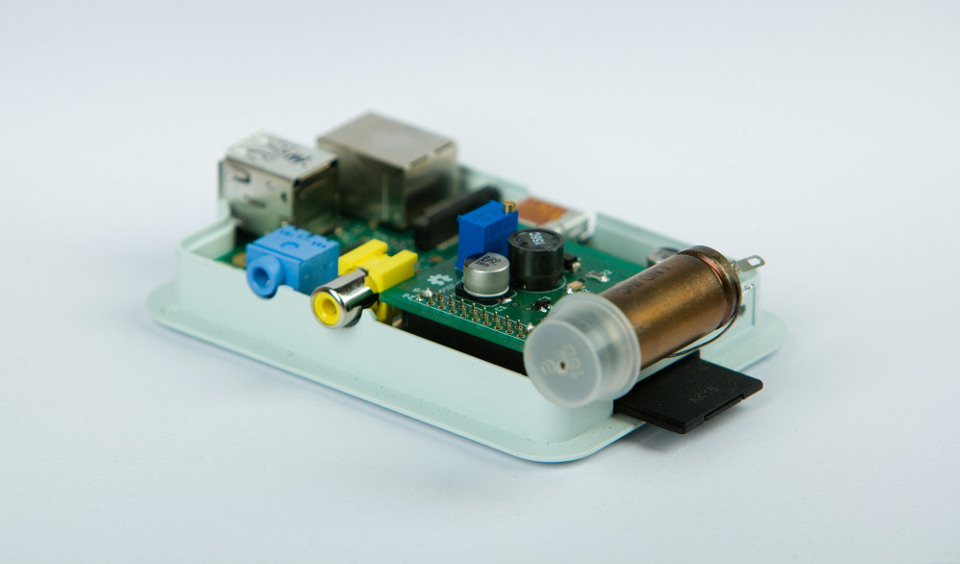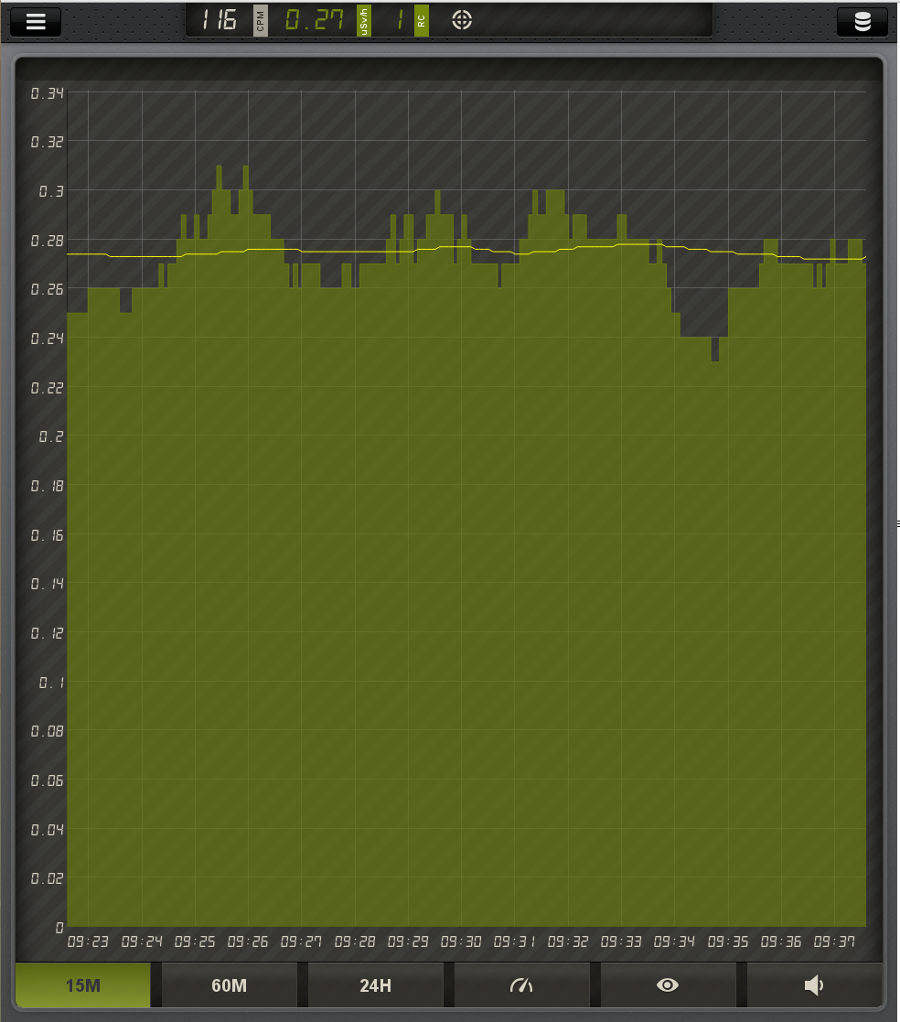The PiGI is built as a ready-to-go drop-in module for the Raspberry Pi to transform it into a versatile geiger counter to measure/monitor radioactivity. It will generate the required high voltage the counting tubes need to operate and it will safely invert the counting impulses to a falling edge, detectable by a GPIO Pin on the PI. But it's also designed in such a universal way in order to be very hackable. Basically it can be connected to any processing system that can detect falling edges like:
- Arduino
- ATMega
- PIC
- Other embedded Linux ARM/MIPS systems with GPIO Inputs (GNUBLIN, Netus G20 etc.)
- 40x43mm board
- Very low energy consumption (<2mA @ 0.09uSv/h local dose rate)
- Cathode counting
- Low BOM count / small footprint
- Very cheap design: Prototype costs per board -> EUR15 / High Volume Production < 10 EUR
- Dual stackable for low/high dosis counting with 2 tubes
- Open-Source Hardware/Software
- Schematics
- Board designs
- Released under CERN OHL 1.2
- Live Status
- Live (15min/60min/24h) Graphs
- Analog gauge
- Ion Trace Visualizer
- History
- Tick Simulator (For show and development)
- Hardware RNG entropy generator
- More to come
- Released under GPL V3




